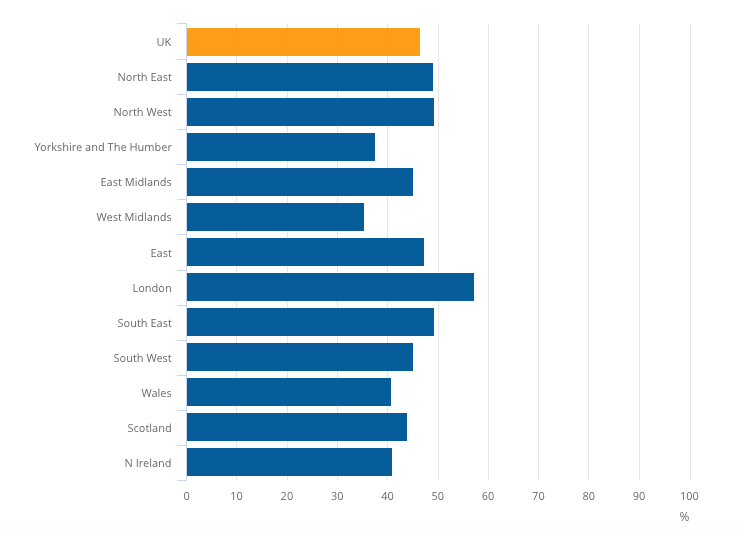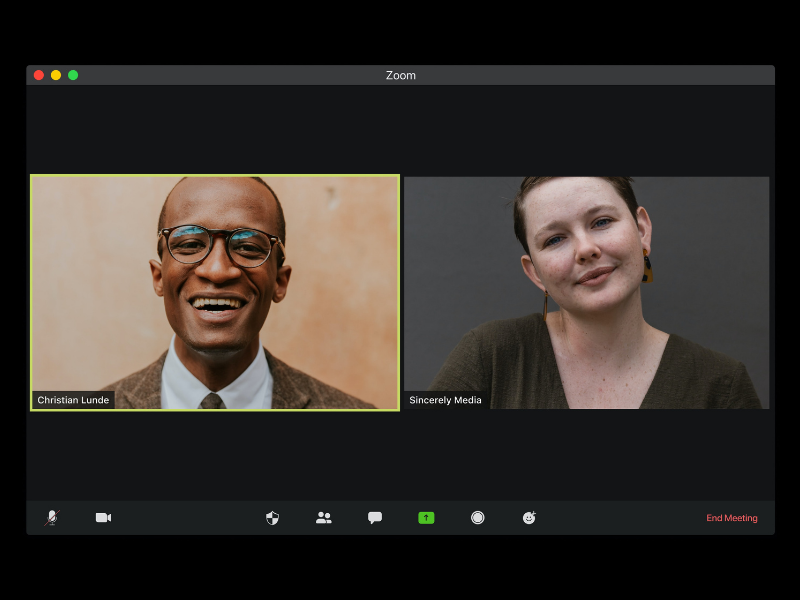Up until recently, remote working was something a minority of lucky ones (or unlucky ones, depending on your preference) got to properly experience – in the UK, this didn’t exceed 5% of the working population.
Whilst homeworking (and flexible working) was already on a slow rise, a little thing called Covid-19 lead those numbers to explode: by April 2020, around 40.7% of Welsh residents worked from home.

You’ve probably heard a lot about the pros and cons of remote working. But there’s one particular challenge that hasn’t been mentioned much: how do we manage cross-generational teams?
Depending on where you are in life, WFH might look very different. Children versus no children, e-mail versus phone call…these are some of the details that can impact the way we work from home.
*Alexa, play “My Generation” by The Who*
You’ve probably noticed a massive difference in the way your parents, grandparents, kids or young cousins use tech. When those generational preferences manifest at work, they can snowball into frustrations amongst teams.
The first step to understand this is to identify these generations. Here’s a little guide:
- We've got Baby Boomers, who created the concept of “workaholics” (1946–1964)
- The independent, sceptical Generation X, our first work-life balance believers (1965–1980)
- The famous, tech-savvy Millennials (Gen Y), real go-getters who thrive on feedback and gratification (1981–1996)
- And finally, Generation Z, the digital natives (1997–2012)

To call, or not to call. That is the question!
If you’re a Baby Boomer, you might have a natural ease to pick up the phone – nothing better than a direct conversation, right?
On the other hand, Gens Y and Z are known to prefer, well, anything that basically allows them to stay on their computer, usually opting for e-mails or even instant messaging. Because “ain’t nobody got time for that”, right? (And if you didn’t get that reference, you’re either way too young to be reading this, or definitely not a digital native). Point is, these preferences can lead to miscommunications or critical information being missed.
Management style and authority
Beyond communication, different generations respond to management styles differently. Gen X are big on keeping their independence and being trusted to get the job done, whilst Gens Y and Z prefer teamwork and recurrent feedback on their results, rather than someone micromanaging them.
Same goes for boundaries: whilst a Baby Boomer will find an out-of-office hours call or e-mail totally normal, a Millennial might feel like their work-life balance isn’t respected.
Bottom line: we’re all people!
Ultimately, a lot of it comes down to personality and individual social skills. Remember, beyond our generational differences, we’re all human! We all have basic, psychological and self-fulfilment needs, and we should choose to see age diversity as a plus.
The benefits of cross-generational teams
“This youth is addicted to their smartphones! They don’t realise how easy they have it”.
“Ugh, I had to explain memes to my parents the other day. I guess that’s Boomers for you”.
You’ve probably heard these at least once. Instead of viewing each other as stubborn technophobes or spoiled youngsters, there’s an opportunity here to make the most out of these differences.
Younger generations are the most comfortable with depending more on tech. They’re generally also less likely to be “distracted” by family duties at home. Older generations might be better at reassuring others through better structure and routines. They’ll also push digital natives to jump on a phone or Zoom call to share their progress and concerns. It’s all about balance!
Our top tips
- Check your demographics. Have a look at what generations work together within your teams. Send out regular surveys with questions on what their preferred communication methods are, what their priorities and needs are at the moment. Once you’ve collected that feedback, you’ll be able to know how they feel really about WFH, and adapt to that!
- Make the most out of your data! Avoid making assumptions about how your staff is coping with remote working. From the information you’ve collected, you’ll be able to test “rules of engagement” and decide on something everyone can agree on. For example, sticking to e-mails or Slack for quick or trivial questions, but picking up the phone for more complex, or urgent matters. This will help minimise chances of miscommunication and get everyone on the same page
- Listen to individual needs. Different generations might have shifting priorities. Gen Xers and Gen Zers might want to be reassured about their work-life balance, as well as benefits like assistance with student debt, training or personal development opportunities, or career prospects and salary progression. Millennials, although also big on work/life balance and career progression, might be thinking a little more about “adult” benefits: mortgage services, on-site day-care, or opportunities to start giving back. Finally, older generations are likely to be more focused on job security, pension schemes and other types of benefits like healthcare. Being aware of these preferences and having open conversations on financial education at work (like Talia Loderick explained in one of our webinars) will help you support your team and boost their morale. Something we all need a little bit of at the moment!
- Teamwork is dreamwork: try mentor pairs! Different generations have different expectations in terms of boundaries, feedback, and communication. Encourage them to see these differences as strengths: you could get them into “mentor pairs”: younger generations could benefit from talking to a more experienced peer, whilst the latter may benefit from a little tech help every once in a while.
- Embrace tech, and think outside the box! Organise virtual lunches and coffee catch-ups, or even online team building games: at Moxie, we love Skribbl (or any excuse for a friendly cuppa!).
- Adapt your managerial style. Focus on results: if being more flexible with people’s preferences leads to better productivity, it probably is for the best, right? Not everyone works best on a 9-5 schedule. Some people are early birds, and some are night owls. Some would rather have a lengthier lunch break, and some would rather skip it to finish earlier. Some might prefer regular feedback, and some prefer their independence. Give your staff some room to experiment what works from them, and make sure to adapt your managerial style to their feedback!
One final note
Getting to know your team is key to building resilience and future-proofing our organisations and the overall sector. Ultimately, you’ll get a lot more insight into your workforce and how they function best. As the pandemic changes work dynamics and flexible working seems to be here to stay, now is the best time for trial and error!
Flexible working is one of our biggest Moxie perks, so if you’d like to chat about how we’ve adapted to the pandemic, feel free to drop us an e-mail…or call us. Or send us a homing pigeon. Whatever your preference is!
We’ve also got a free webinar coming up with Emma Carroll, Founder and Director of Choose To Grow, where we’ll dive into the topic of pivoting leadership and managing hybrid teams. More information here!

Our latest webinar with Emma Carroll
To pivot or not to pivot: that is the question! Watch our webinar on how to build resilience for your social housing or third sector organisation through leadership with Emma's insights.
Find out moreSources:
- 10 Tips for Successfully Managing Remote Workers – by Kathy Gurchiek for SHRM.
- A Guide to Managing Your (Newly) Remote Workers – by Barbara Z. Larson, Susan R. Vroman and Erin E. Makarius for Harvard Business Review.
- How to manage multigenerational teams working from home - by Carina Paine Schofield for People Management.
- How different generations approach remote work during COVID-19 - by Karen Roby, Veronica Combs, and Macy Bayern for Tech Republic.
- The Importance Of Remote Working To Younger Generations - by Deloitte BrandVoice for Forbes.
- 5 ways to successfully manage a multi-generational workforce - by Jess Fuhl for Sage People.
- How to Manage the 5 Generations in the Workplace - by Paychex Worx.
- Managing a Remote Workforce that Spans Generations: 5 Tips - by Molly Greenberg for Remote.Co.
- The secret to effectively managing different generations in the workplace - by Jessica Kriegel for Monster.
- Coronavirus and homeworking in the UK: April 2020 - Office of National statistics.



